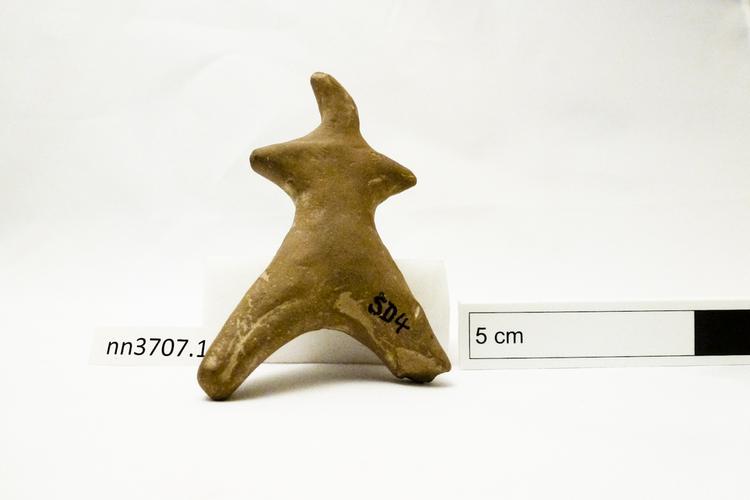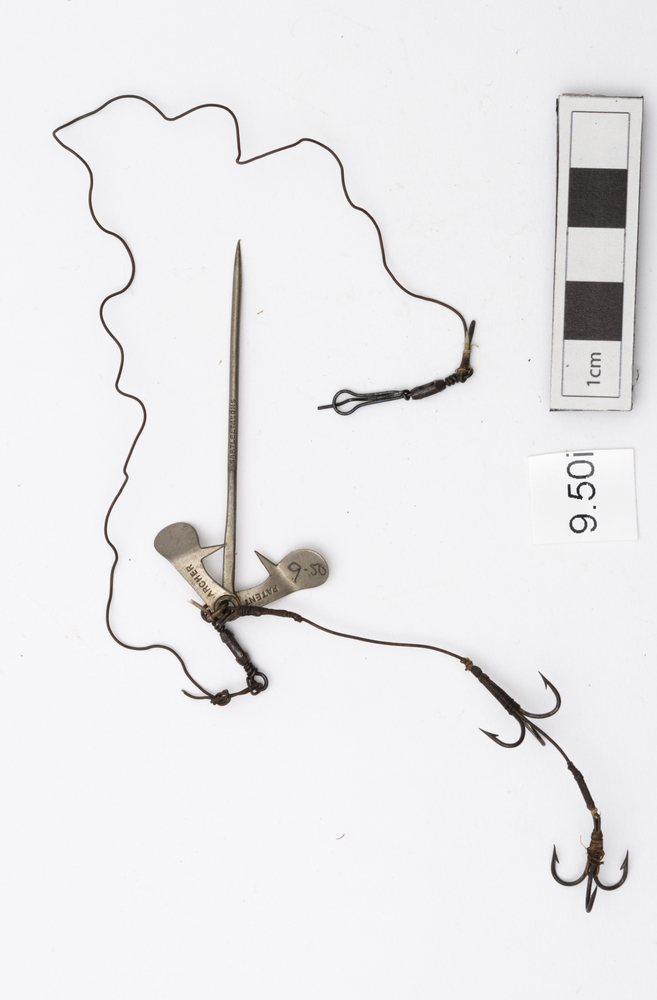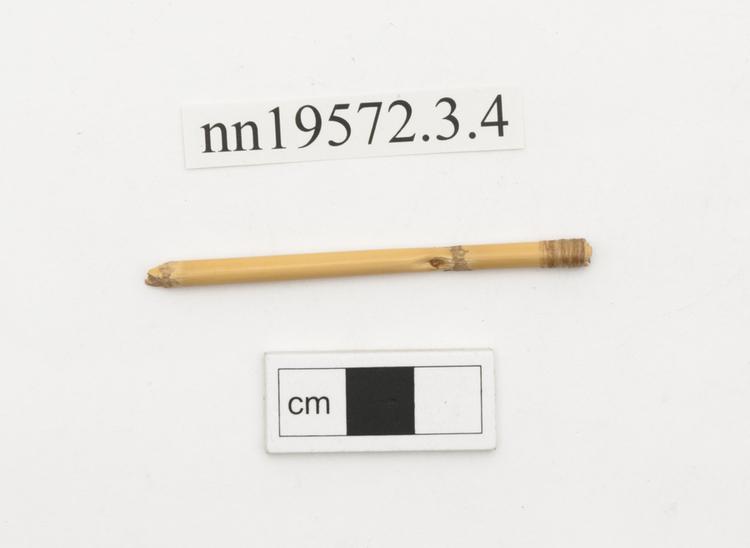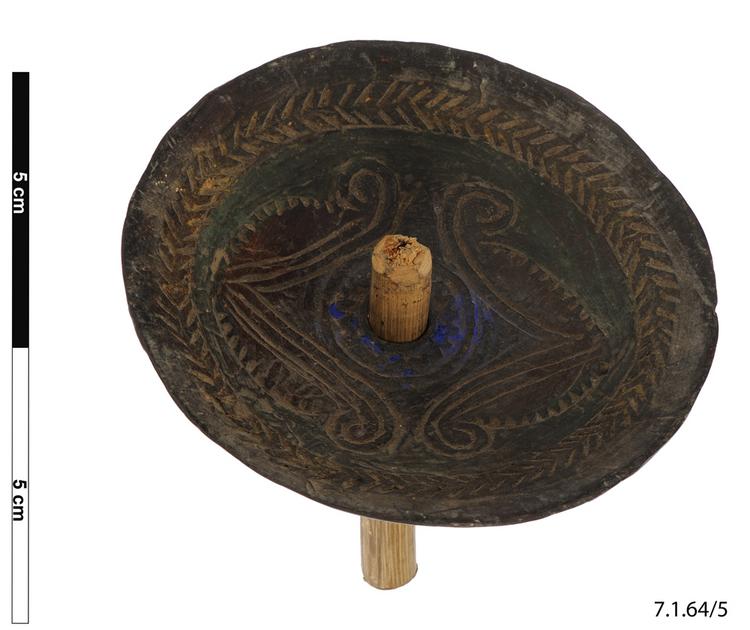
Figure of a rider, once mounted on a horse figurine, in plain light red terracotta. It has a beak-like head, with no physical features depicted and pointed upwards, short outstretched triangular arms like the short arms of the Sar Dheri females, a wide lower torso above large, and out of proportion splayed legs (one foot lost), so positioned for the mounting of this figure on the back of an animal, most likely a horse.
Figure of a rider, once mounted on a horse figurine, in plain light red terracotta, a beak-like head with no physical features depicted and pointed upwards, short outstretched triangular arms (like the short arms of the Sar Dheri females), a wide lower torso above large, out of proportion splayed legs (one foot lost), so positioned for the mounting of this figure on the back of an animal, most likely a horse. In the usual way, this object can probably be described as being a child’s toy, no other discernible use being possible for it. Horses and rider models in terracotta are well known in the Early Historic Period archaeology of Pakistan, though usually they consist of more elaborately decorated and sculpted figures than this very plain example. Marked on the broken leg with ‘SD4’ (probably Sar Dheri, Charsadda District, Khyber-Pakhtunkhwa, Pakistan). Early Historic Period, circa 1st century BCE or CE. Archaeological context: presumably unstratified and from a surface collection. Given by Col D H Gordon (1952/3).






